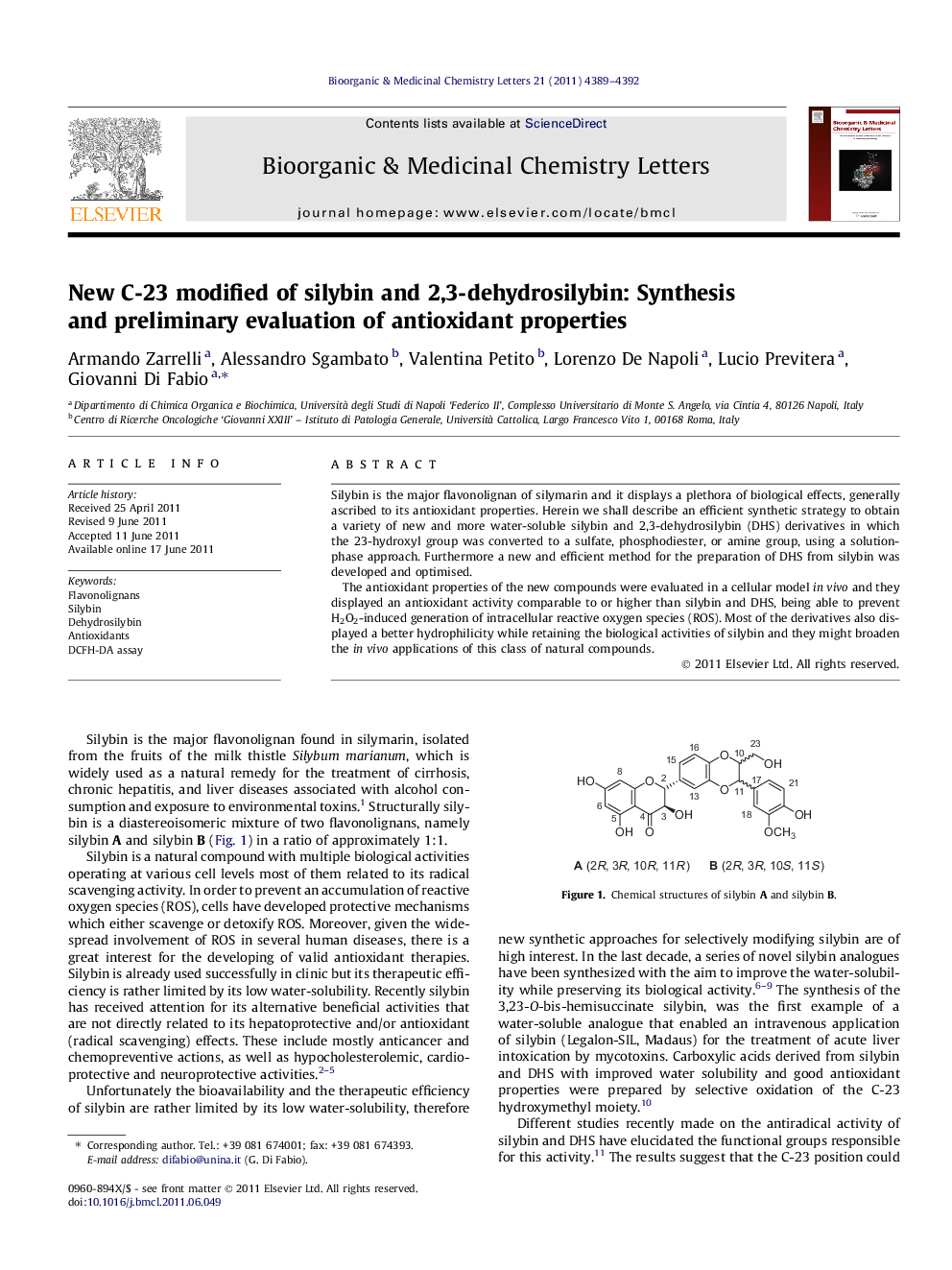| Article ID | Journal | Published Year | Pages | File Type |
|---|---|---|---|---|
| 1370580 | Bioorganic & Medicinal Chemistry Letters | 2011 | 4 Pages |
Silybin is the major flavonolignan of silymarin and it displays a plethora of biological effects, generally ascribed to its antioxidant properties. Herein we shall describe an efficient synthetic strategy to obtain a variety of new and more water-soluble silybin and 2,3-dehydrosilybin (DHS) derivatives in which the 23-hydroxyl group was converted to a sulfate, phosphodiester, or amine group, using a solution-phase approach. Furthermore a new and efficient method for the preparation of DHS from silybin was developed and optimised.The antioxidant properties of the new compounds were evaluated in a cellular model in vivo and they displayed an antioxidant activity comparable to or higher than silybin and DHS, being able to prevent H2O2-induced generation of intracellular reactive oxygen species (ROS). Most of the derivatives also displayed a better hydrophilicity while retaining the biological activities of silybin and they might broaden the in vivo applications of this class of natural compounds.
Graphical abstractFigure optionsDownload full-size imageDownload as PowerPoint slide
